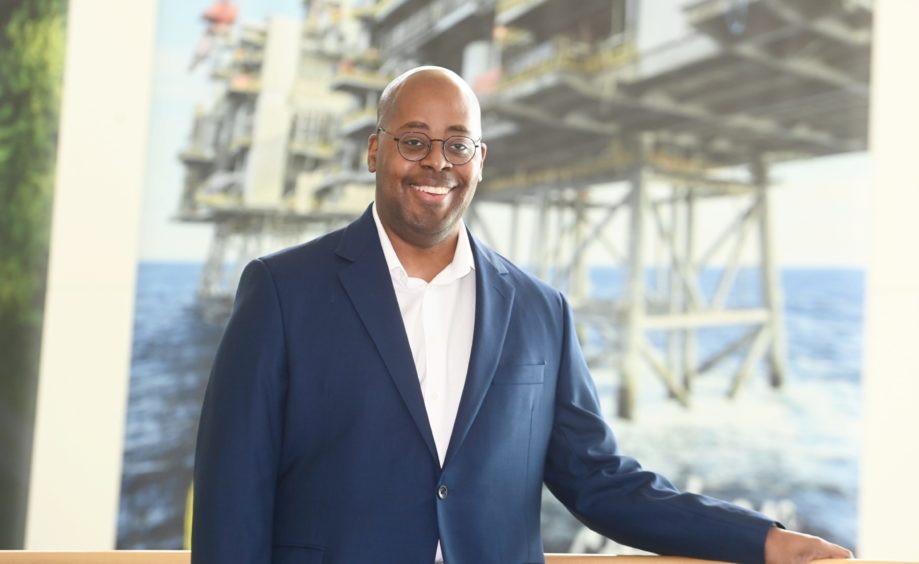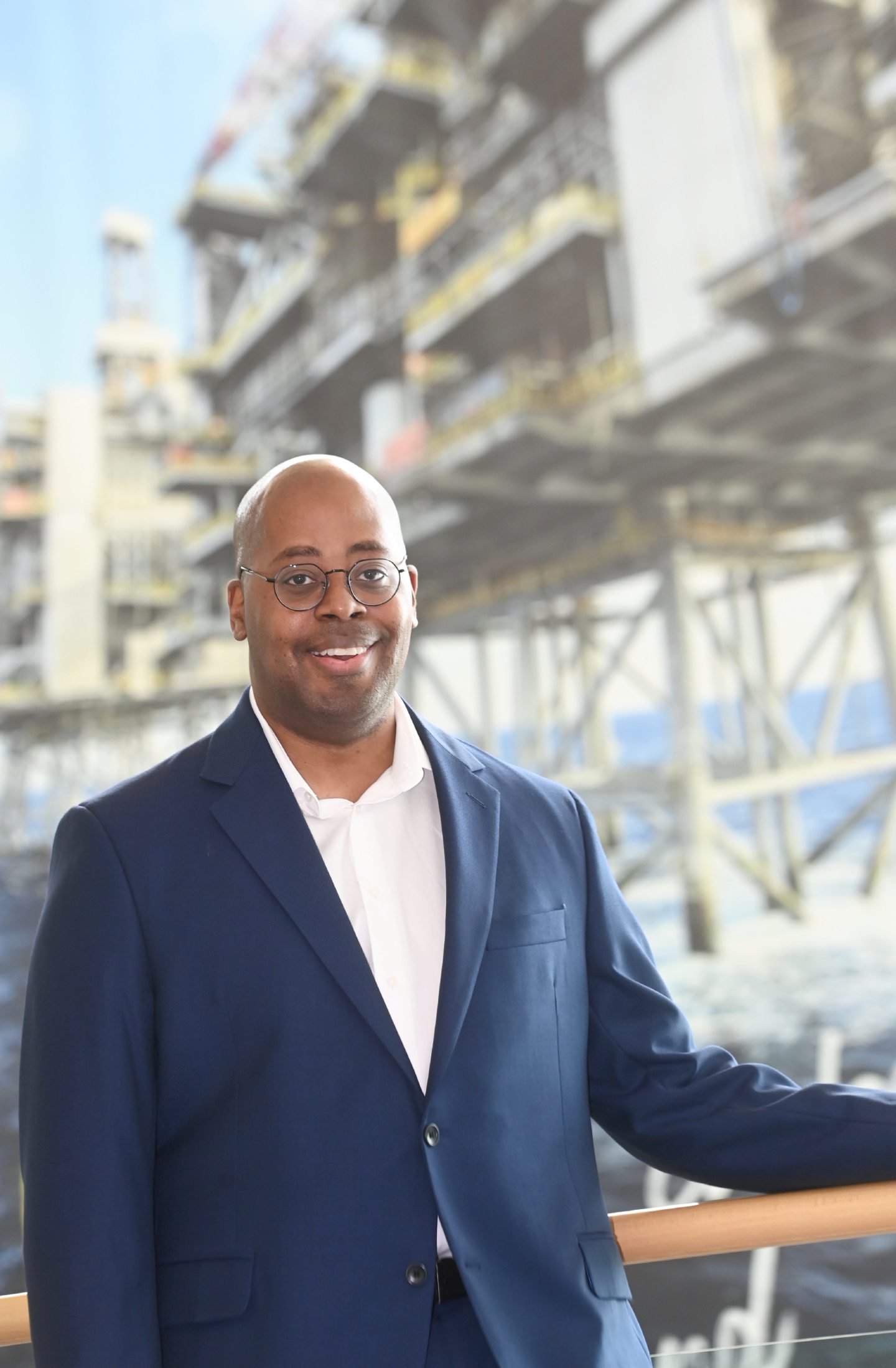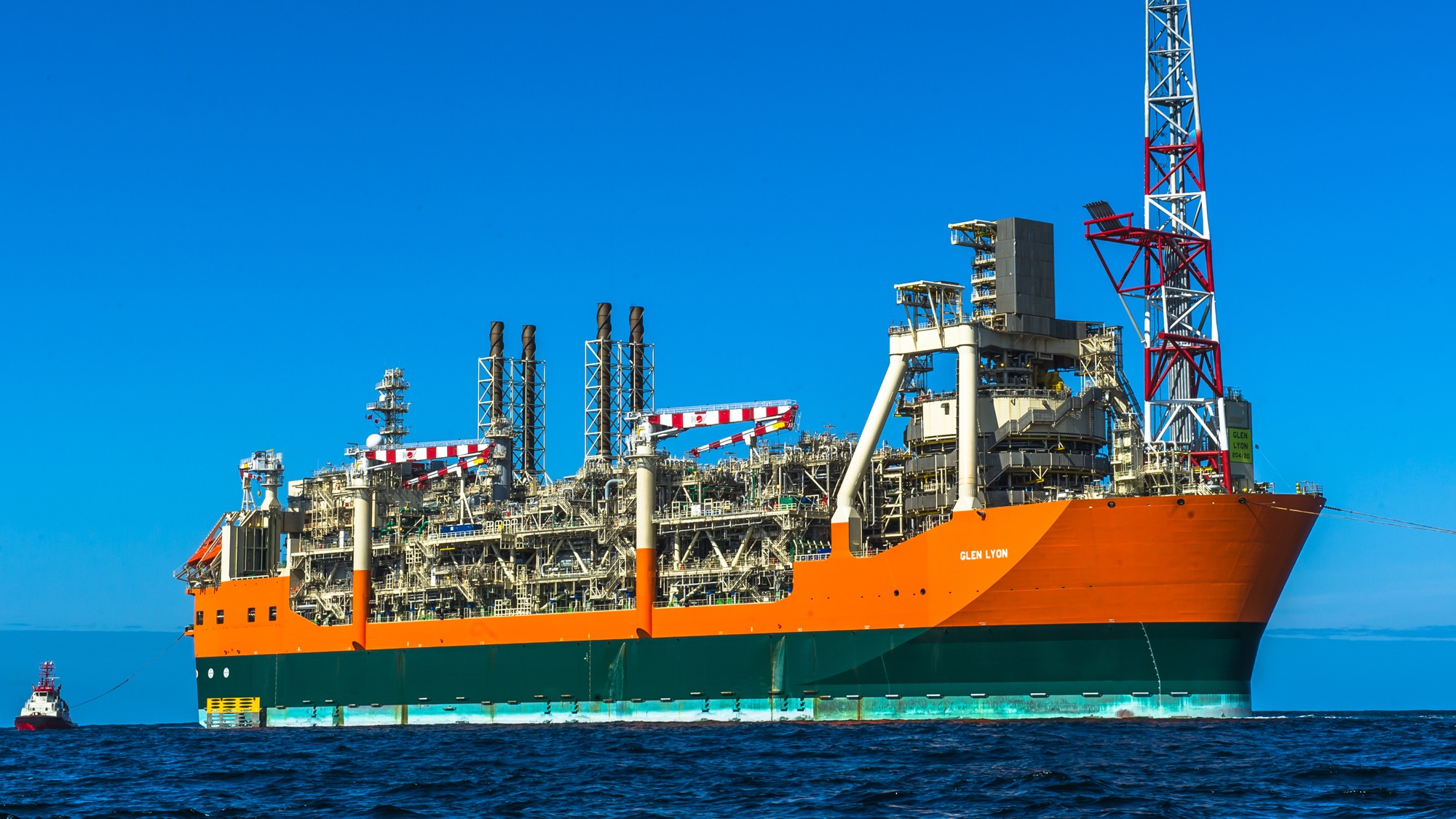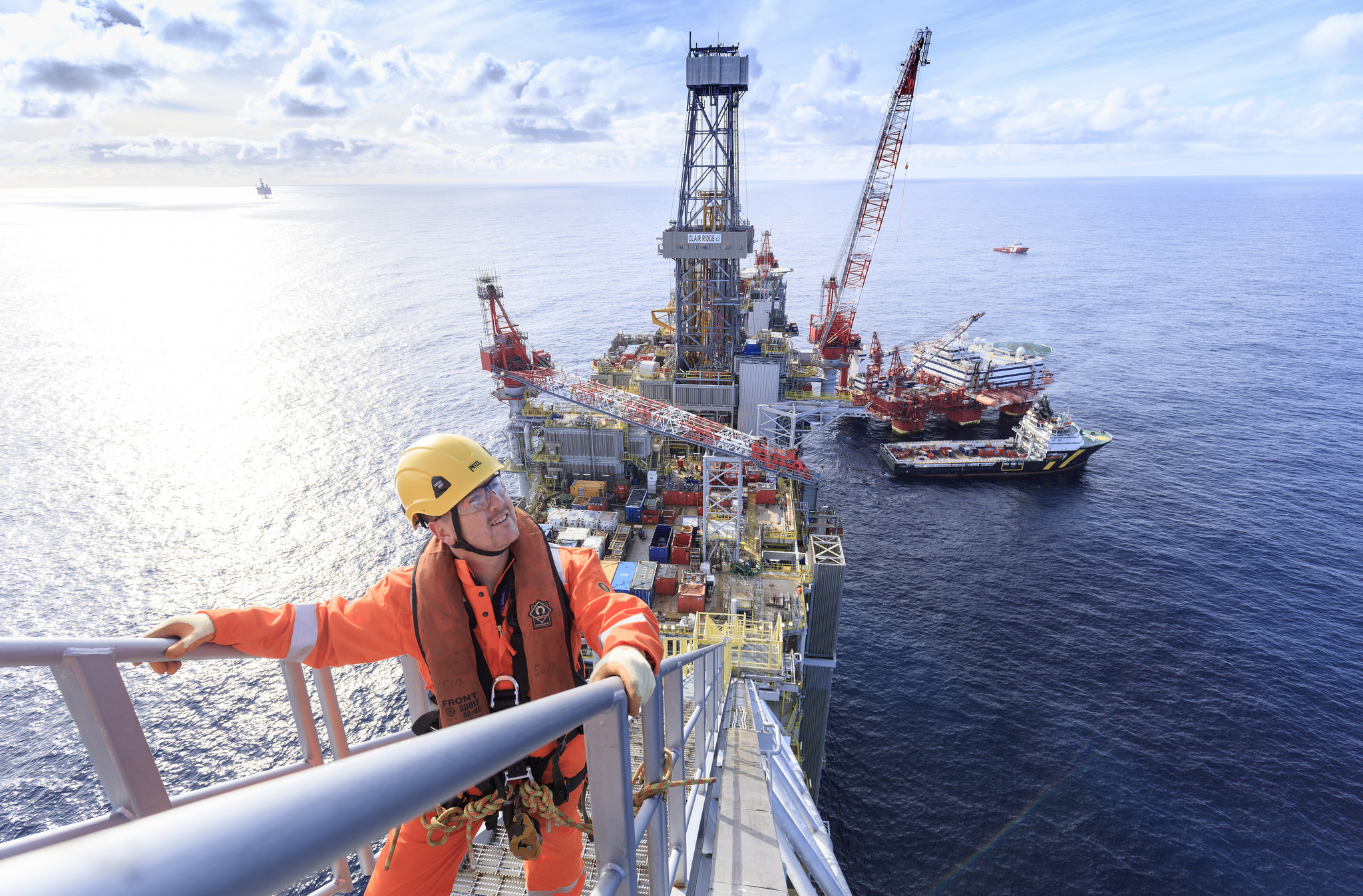
“At BP, I think we try to do the right thing,” says Emeka Emembolu, the energy giant’s North Sea boss.
This statement may seem fanciful to people for whom the name BP conjures up images of spills or makes them think unfavourably of its history of oil and gas production.
However, BP has stepped up its efforts to transform what its legacy might end up looking like, decades from now, particularly since chief executive Bernard Looney took up the reins last year.
Arguably, the most compelling piece of evidence for that is its recent pledge to invest £10 billion in offshore wind, ports, hydrogen and EV charging networks in Scotland if it is granted a seabed lease via the ScotWind competition.
The announcement was noteworthy in a number of respects, not least because it didn’t spark accusations of greenwashing from campaign groups – an impressive feat but not one that less well-heeled companies can learn from, unfortunately.
Emembolu agreed that the levels of funding BP is prepared to invest would rightly put it outside the greenwashing bracket.
He said ScotWind should give people evidence of the scale of BP’s commitment to the transition and to “electrifying” Scotland.
“We try to take the right positions and follow them through,” he said in his first print media interview.
BP, in general, is making a “big bet” on offshore wind, with huge investments earmarked for the US east coast and East Irish Sea.
The company is also in the throes of a substantial offshore wind recruitment drive, and that’s before serious construction work starts.
The unfortunate caveat is the thousands of job losses announced in June last year following the slump in oil and gas prices.
Looney, himself a former BP North Sea boss, said the company was already planning to reinvent itself and become leaner for the crusade to net-zero, but that the pandemic had accelerated the move.
Asked about the impact on staff, Emembolu said the company had to change to set itself up for the “next phase” and that most other traditional oil firms were leaning in a similar direction to BP.
He took on his current role on July 1 2020, moving to the Granite City from Houston, where he was vice-president of reservoir development, Gulf of Mexico and Canada, and replacing Ariel Flores.
Emembolu, a thoughtful and soft-spoken father-of-four, was born in Glasgow to parents who worked in the medical profession, but left the city aged four.
He joined BP in 1998 after graduating from Sheffield University with a degree in biochemical engineering and cut his teeth in the North Sea on the ETAP platform, where he was present for first oil.
Spells in Angola, Alaska, North Africa and the US followed before his career brought him back to Aberdeen, which he described as “a great place to bring up a family”.
Emembolu, who is keen to help the industry improve its diversity and inclusion record, has noticed big changes to the Granite City, not least the bypass and conference centre – the sight of which prompted a gasp and a “what is that?” as his plane came in to land.
He has visited all of BP’s UK offshore facilities, comparing sitting in the OIM’s office on ETAP again to being “back in the principal’s office”.
‘Something has to change’
Some familiar faces remain from his first stint in the North Sea, but much has changed since the late-90s, not least societal attitudes to oil and gas exploration and production.
Siccar Point and Shell’s proposed Cambo development is the undisputed whipping boy as campaign groups and political parties pile on the pressure to get it halted.
Of course, this heated debate goes deeper than just one project. Cambo won’t be the last oil production scheme put forward in the UK.
Will all of them be subjected to similar levels of criticism and scrutiny?
Perhaps not. Cambo would be a substantial, standalone project. The UK Continental Shelf is unlikely to host many more of those.
But even BP and Ithaca’s relatively-modest Vorlich tieback project got pulled into the debate around oil’s future in 2019.
Weighing in on the argument, Emembolu said maintaining domestic supply would be beneficial to the UK while demand remains.
Furthermore, if the country was forced to increase imports of oil and gas, it would have less control over emissions.
Emembolu said: “There’s a demand and supply side of the equation. On the demand side, people are still going to need oil and gas for a while and if the North Sea taps were turned off that would not be good for the UK economy.
“There would be job losses, heating bills would be higher, it would have an adverse impact.
“But there’s also a demand to change to lower-carbon forms of energy.
“We all accept the science of the climate crisis we’re in, so something has to happen, something has to change.
“I think BP is really focused on how we play our part in that transition and how we build up these other forms of energy in the UK and beyond.”
Cambo protestors who stormed a UK Government building in Edinburgh and those who dropped off petitions with 80,000 signatures to No 10 Downing Street will have heard these arguments before and dismissed them.
These people aren’t going to disappear. Some in the industry might wish they would, but Emembolu views their role as positive, for the most part.
He said: “With digital systems, people have more ways of making their voices heard and that can feel uncomfortable at times.
“But, on balance, it’s a good thing that we can hear more voices about the different issues people are facing.
“As an energy company, it means more people are holding us to account, so if we don’t do as well as we can, it’s going to be more obvious.
“We have to hold ourselves to the highest standard we can, because if we don’t, someone else will.”
In addition to investing in low-carbon technologies and power generation, BP is addressing the footprint of its existing UK oil and gas operations.
The company has installed vapour recovery systems to help minimise flaring on the Glen Lyon FPSO and Clair Ridge complex, both west of Shetland, and plans are afoot to install one on the Clair platform.
BP will no longer routinely flare gas from its facilities in that region within the next couple of years.
‘Measure twice, cut once’
Electrification of offshore platforms is the next big step.
To that end, BP, Shell, TotalEnergies and Harbour Energy are studying options for powering a group of central North Sea platforms, including ETAP, with green electricity.
Each company has allocated staff members to form a joint team.
The team is in the “scoping” stage, which involves agreeing on what the project should look like and how to ensure that new infrastructure becomes an integral part of wider North Sea energy operations.
In addition, they are speaking directly to the Oil and Gas Authority and the UK Government about the “frameworks” required to get the scheme moving.
The commercial, regulatory and technical hurdles are daunting, which is why lining up all of the pieces of the puzzle takes a lot of work.
Once this has been achieved, the group intends to move quickly.
Emembolu said: “This is something we are all very firmly committed to figuring out.
“We’re taking the ‘measure twice, cut once’ approach. We’re trying to make sure we know what we’re going to do, make sure we’re aligned, then get after it.”
Clair Ridge, which started up west of Shetland in 2018, is “better set up” for electrification than older central North Sea platforms.
Emembolu said BP was going to “start looking at and progressing” work around electrification in that region, too.
He has spoken to Gunther Newcombe, the former OGA operations director who is spearheading the Orion project, whose partners include Shetland Islands Council and the Net Zero Transition Centre, among others.
Orion seeks to use onshore and offshore wind to power offshore platforms while creating a green hydrogen export business.
Emembolu said: “We will be engaging to see how we can broadly support the energy transition and electrification around the west of Shetland. We need to do that for our own assets, anyway, and we’re going to work with EnQuest, as Sullom Voe Terminal operator, around what a lower-carbon future looks like for that facility, as well.”
Mapping out the future
Though it is diversifying fast, BP is still very much an exploration and production business, with upstream output of 2.37 million barrels of oil equivalent per day last year.
Irishman Looney has described hydrocarbons as the “engine of value creation” that will help pay for BP’s transformation, though the company did promise to lower its oil and gas production by 40% over the next decade.
BP has also scythed its exploration team and will no longer explore for fossil fuels in countries where it doesn’t already have a footprint.
While some countries have banned exploration, the UK has opted to create a checkpoint system for judging whether to launch further licensing rounds.
This didn’t go far enough for some, but came as a relief to the industry.
Given how little UK North Sea exploration has taken place in the last seven years, it feels like a moot point.
Emembolu said BP would continue to do “select” exploration in its core oil and gas regions, one of which is the UK.
“In terms of exploration in the North Sea, we do have exploration obligations and commitments with the OGA and we will fulfil those,” he said.
“Our focus is going to be on identifying how we can progress the right investments, but in the most environmentally acceptable way.”
Indeed, BP participated with Equinor on the Tiger Lily exploration well, one of very few scheduled for drilling in the North Sea this year.
On the development side, the company is a partner on the Neptune Energy-operated, 50 million barrel Seagull project, which involves a tieback to ETAP.
An infill drilling programme at Clair Ridge is on-going.
BP is also mapping out its future plans. It is evaluating further infill wells and tiebacks at ETAP and Glen Lyon.
Meanwhile, a lot of work is going into understanding how best to develop the next phase of the giant Clair field.
As reported by Energy Voice earlier this year, an all-subsea development is one of the options being considered for the third phase, Clair South.
Furthermore, BP is weighing up how to redevelop Foinaven after the current FPSO leaves the field next year.
The vessel had suffered a string of safety issues, prompting the decision to remove it.
BP is no longer actively marketing its Andrew field, the subject of a collapsed bid from Premier Oil, now Harbour Energy.
It will focus on “stabilising” the field and running it through to 2026-27, at which point it will be decommissioned.
Emembolu added: “We are changing our energy mix and driving towards a lower-carbon future.
“We’ve made big commitments to wind, carbon capture, usage and storage and hydrogen.
“We will be looking globally at less oil and gas as part of that mix over time.”
Recommended for you


 © DCT Media
© DCT Media
 © DC Thomson
© DC Thomson